What is OODA Loop?
The OODA loop is an iterative process for making effective decisions by continually adapting and responding to changes. It involves collecting relevant information, recognizing potential biases, making a decision, acting on that decision, and then repeating the process by factoring in new information and learnings based on real-time feedback.
It's particularly valuable to make quick decisions in dynamic and rapidly changing environments. OODA stands for "Observe, Orient, Decide, Act." It was developed by military strategist and United States Air Force Colonel John Boyd.
-
Rapid decision-making process involving multiple feedback loops.
-
Allows for quick adjustments to strategize and adapt as more data becomes available.
-
Generates the most appropriate decision by paying attention to assumptions and biases.
-
Enables rational thinking when dealing with pressure, confusion, or chaos.
What are OODA stages?
Here are the four stages of OODA loop to make better decisions:
O: Observe (Collect relevant information)
In this stage, gather information about your environment and the situation you are facing. This includes collecting data, facts, and intelligence from various sources. Observing allows you to understand the current state of affairs and the various factors at play.
O: Orient (Recognize potential biases)
In the orient stage, analyze and interpret the information you gathered during the observation phase and try to build the most accurate and comprehensive picture. It requires recognizing barriers that might interfere with the decision making process. The biggest barrier to making a good decision is your cognitive biases—mental shortcuts that can prevent you from thinking clearly, connecting with reality and seeing the world as it really is.
This involves assessing the data's relevance, identifying patterns, and understanding the implications of the information. It also includes considering your own mental and emotional state, as biases and preconceptions influence your orientation.
By paying attention to your assumptions and biases, you can recognize them and replace them with helpful mental models.
D: Decide (Make a decision)
After orienting yourself to the situation, make a decision based on your analysis and assessment. This decision can be a course of action, a plan, or a strategy. The decision-making process should be agile and adaptive, allowing you to respond quickly to changing circumstances.
A: Act (Act on the decision)
In this final stage, implement the decision you made. This involves taking concrete steps or executing the chosen plan of action. It's important to act decisively and with a sense of urgency, as the OODA loop is designed for situations where time is a critical factor.
Loop:
The OODA loop is not a rigid, linear process but rather a continuous and iterative one. As you act, observe the outcomes and consequences of your actions, which can provide new information that feeds back into the loop, prompting you to orient, decide, and act again as the situation evolves. By continuously cycling through these stages, you can aim to gain a competitive advantage, particularly in dynamic and competitive environments.
Repeat the OODA loop until you achieve the desired outcome or reach a point where moving forward is no longer possible.
How to make better decisions using OODA Loop?
To make better decisions using OODA loop, ask these questions in each stage of the OODA Loop:
Observe
-
What is happening right now?
-
What are the key facts and data points?
-
What information is available, and where is it coming from?
-
Who are the stakeholders or parties involved?
-
What environmental factors or constraints affect the situation?
-
What are the potential threats and opportunities?
Orient
-
What does this information mean?
-
What are the underlying patterns or trends?
-
What is the historical context or background of this situation?
-
How does this situation compare to past experiences?
-
What biases or preconceptions might be affecting my understanding?
-
What does the observed information mean in the context of my goals and objectives?
-
What are the potential implications and consequences of the observed data?
-
How do the observed factors relate to each other, and what is their significance?
-
What are the key drivers and critical uncertainties in this situation?
Decide
-
What are the available options or courses of action?
-
What are the risks and benefits associated with each option?
-
What are the potential second-order effects of each decision?
-
Which option aligns best with my objectives and values and is feasible given the current situation?
Act
-
What specific steps do I need to take to implement my decision?
-
Who needs to be involved in the execution?
-
Who is responsible for each task, and what are their roles and responsibilities?
-
What resources are required to execute the plan effectively?
-
What contingencies or adjustments should I be prepared to make?
-
What are the potential unintended consequences of my actions?
-
How will I monitor and evaluate the progress and outcomes?
Remember that the OODA loop is iterative, so you may need to revisit these questions as you cycle through the stages. Continuously updating your understanding of the situation and adapting your decisions and actions accordingly is key to its effectiveness in dynamic and uncertain environments.
Additionally, the specific questions you ask may vary depending on the context and complexity of the situation you are facing. The key is to maintain agility and adaptability in your decision-making and action-taking processes.
Who uses the OODA Loop?
The OODA loop (Observe, Orient, Decide, Act) is a decision-making process that was developed by military strategist and Air Force Colonel John Boyd. While it originated in a military context, the OODA loop has been widely adopted in various fields, including business, law enforcement, and emergency response. Here are some situations where the OODA loop can be beneficial:
High stress environments
Situations that involve high-stress and rapid decision-making, such as emergency response, crisis management, or combat situations, benefit from the OODA loop's emphasis on quick adaptation and decision-making.
Business strategy
Industries facing rapid technological changes, market shifts, or intense competition can benefit from the OODA loop. It helps businesses stay agile and responsive to market trends, enabling them to adapt their strategies swiftly.
Innovation and product development
When creating or improving products/services, using the OODA loop can help teams iterate quickly, test ideas, and adjust based on customer feedback, thereby fostering innovation.
Project management
Projects with evolving requirements or complex variables can benefit from the OODA loop. It allows project managers and teams to continually assess progress, adapt plans, and make decisions in real-time.
Sports and performance
Athletes and sports teams can apply the OODA loop to analyze opponents, adapt strategies during games, and make quick decisions to respond to changing game dynamics.
Risk management and security
Situations involving risk assessment, cybersecurity, or threat analysis benefit from a continuous loop of observation, orientation, decision, and action to mitigate potential risks.
Personal decision-making
Individuals facing complex life decisions or rapidly changing circumstances can use the OODA loop to systematically analyze options, make informed choices, and adapt based on outcomes.
What are the benefits of the OODA Loop?
Here are the key benefits of the OODA Loop:
-
Fosters agility by promoting rapid decision-making and adaptation to changing circumstances.
-
Encourages quick actions based on the most recent information available.
-
Enhances situational awareness by continuously observing and orienting to the environment.
-
Allows for constant reassessment of risks and implementation of mitigating actions.
-
Better decision quality with less reliance on outdated or incomplete data.
-
Promotes a continuous learning mindset to adapt, innovate, and learn from both successes and failures.

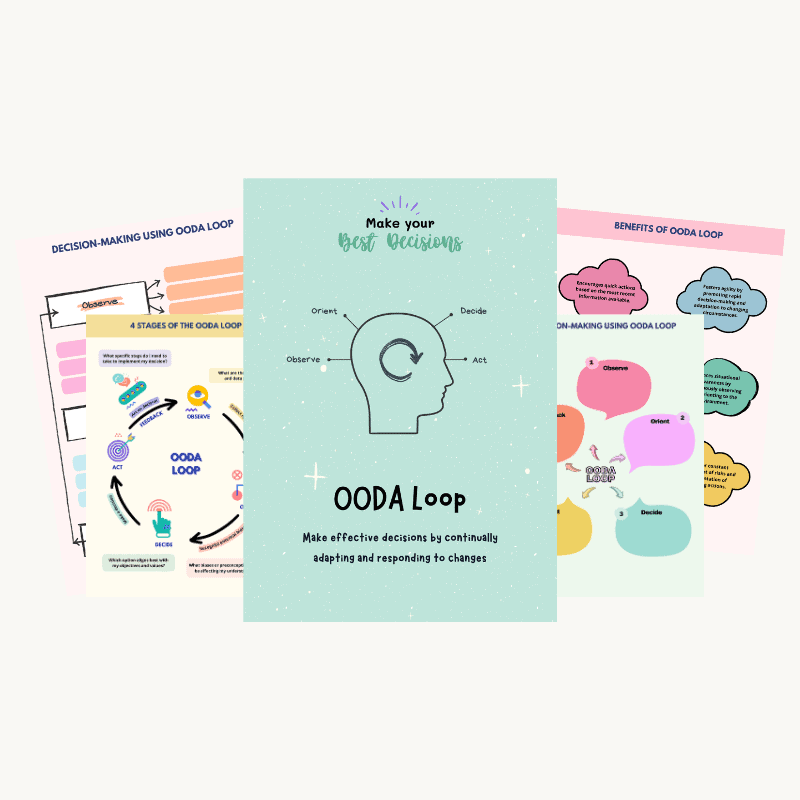
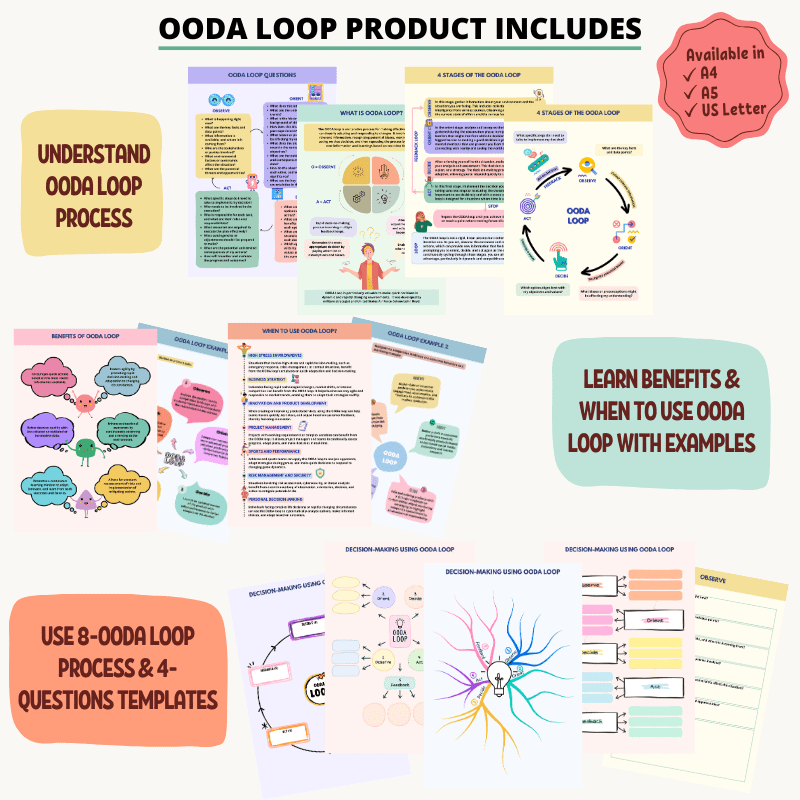
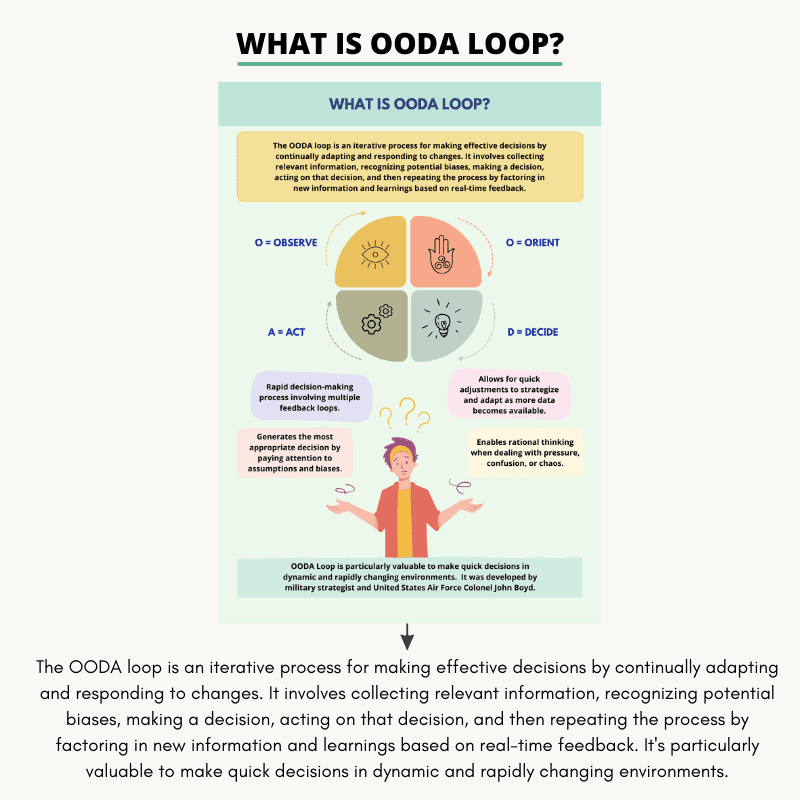
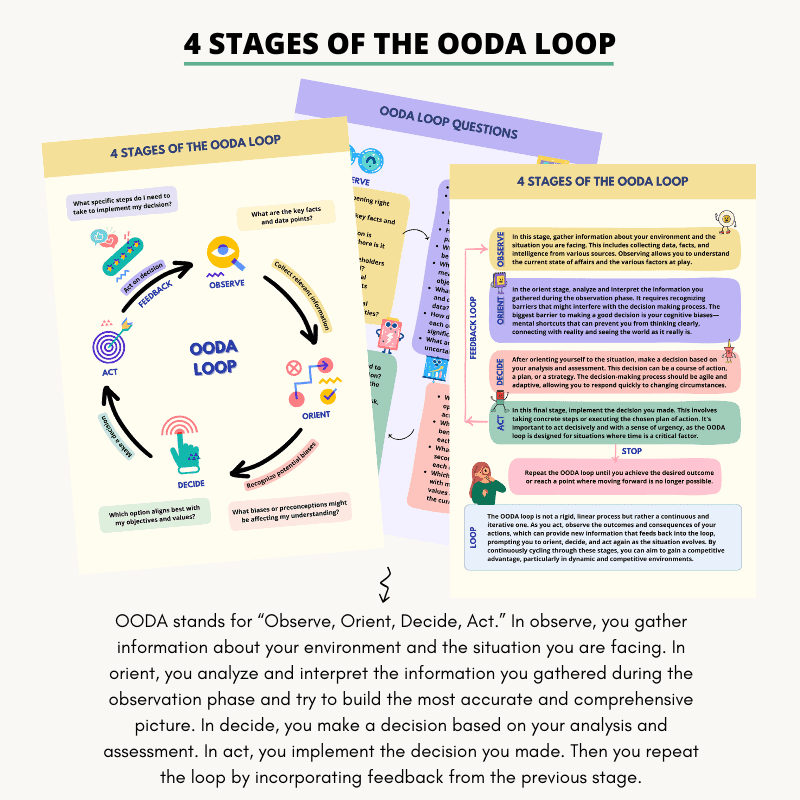
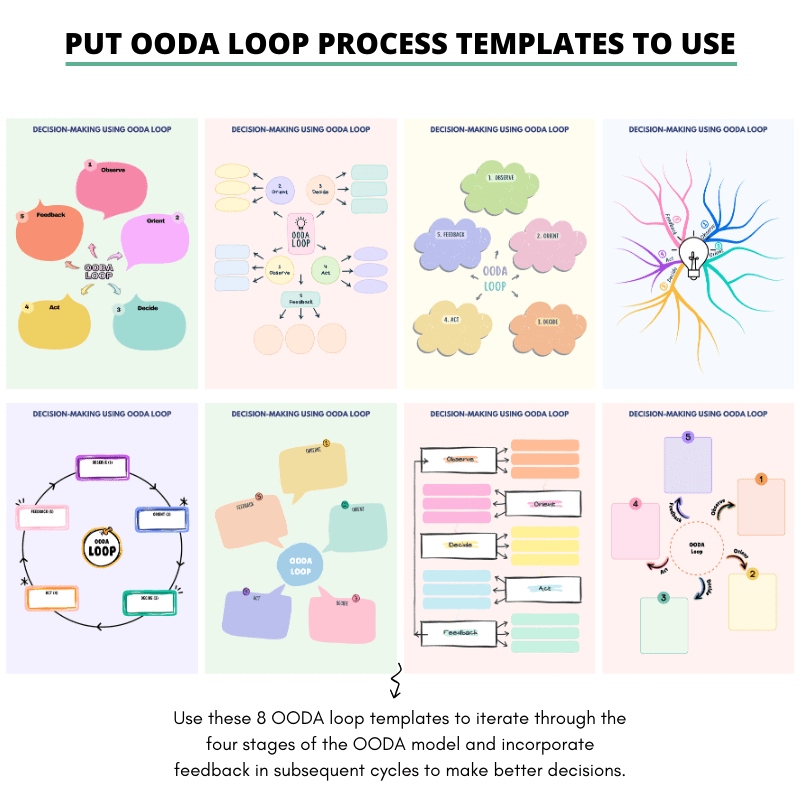
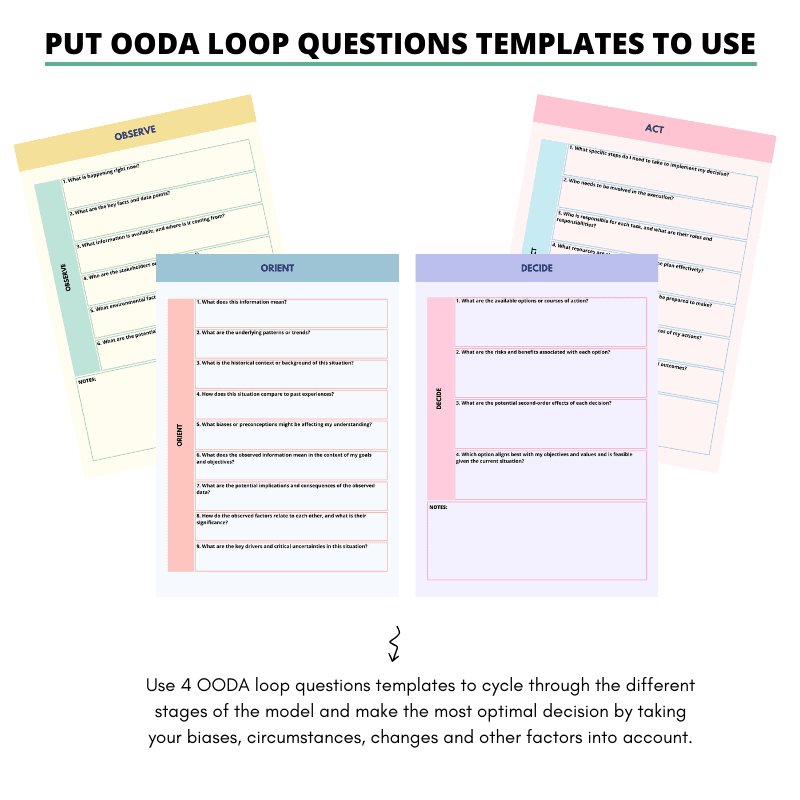
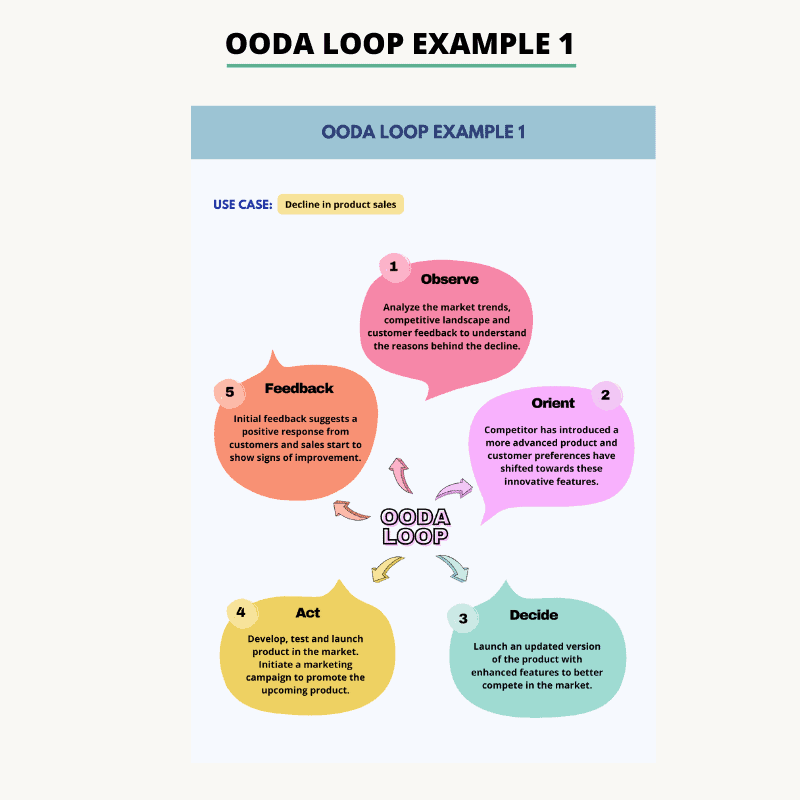
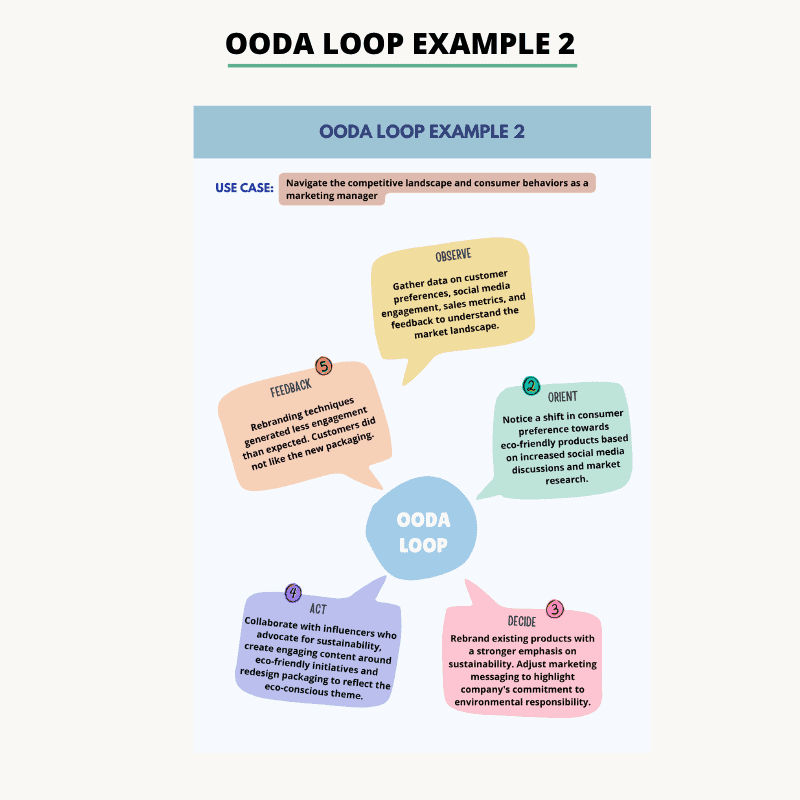
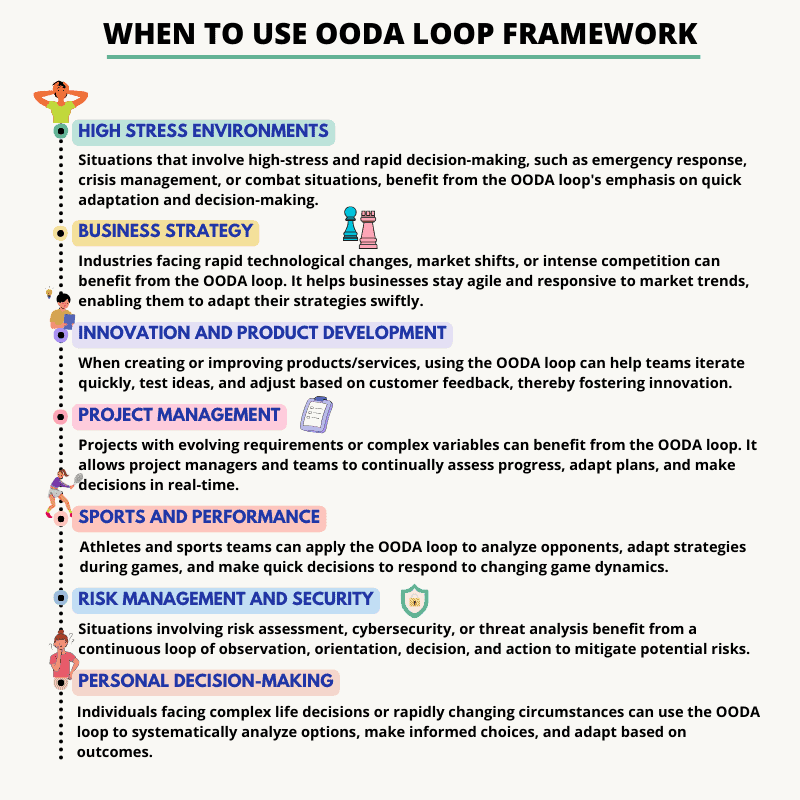
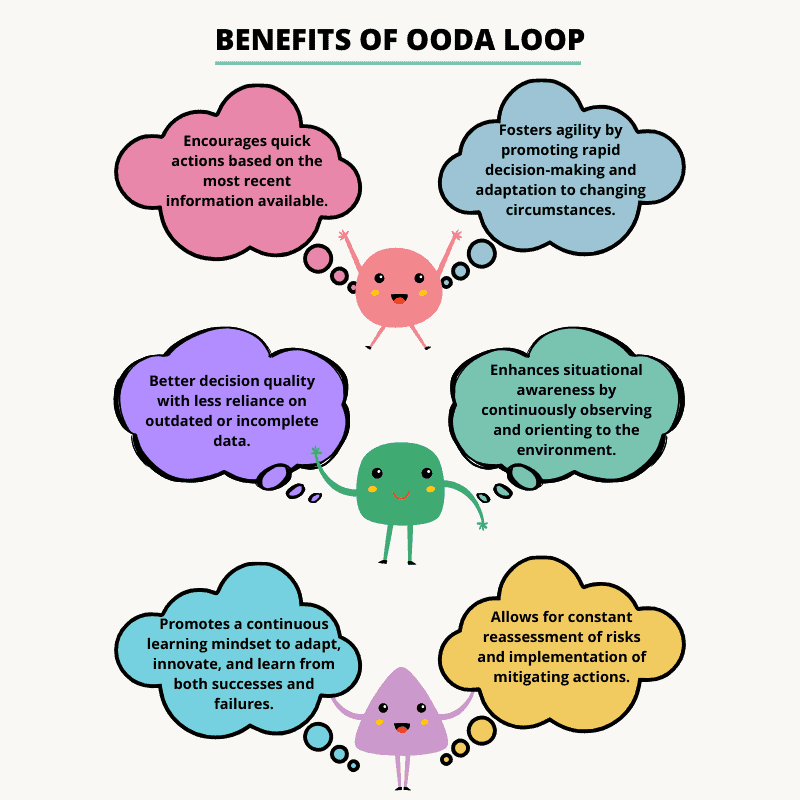
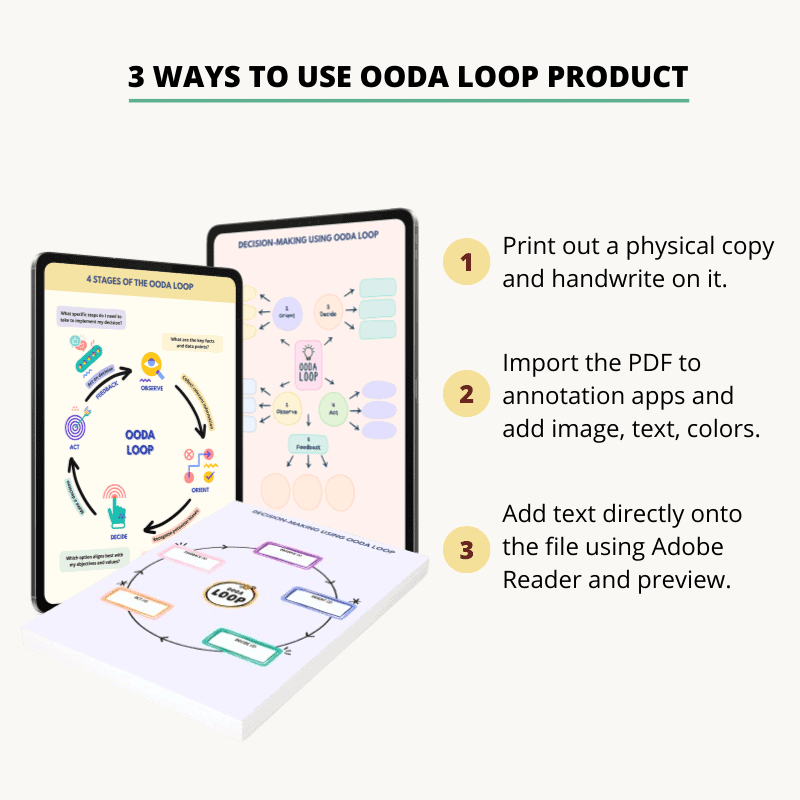
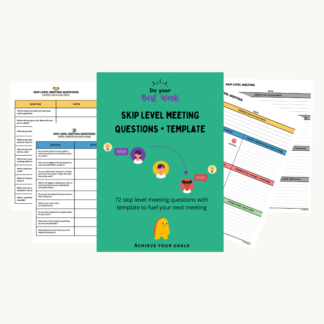
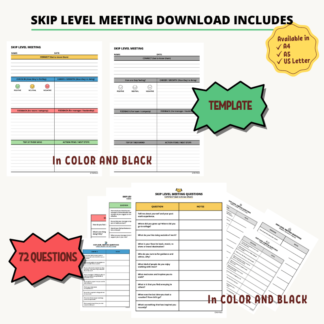
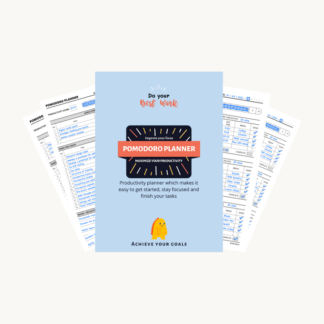
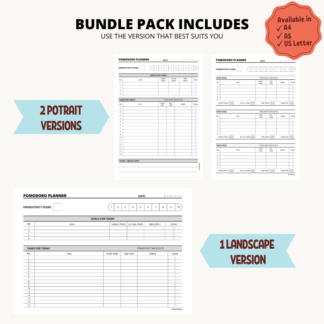
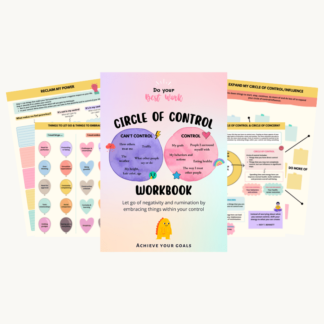
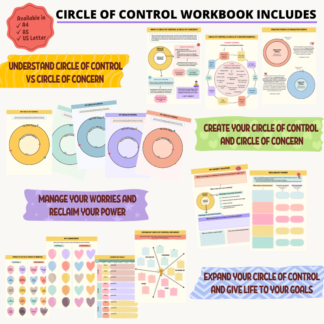
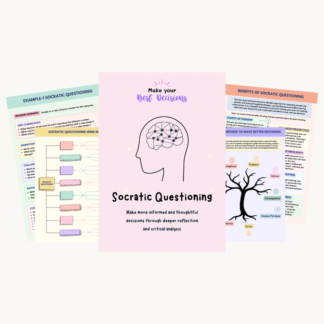
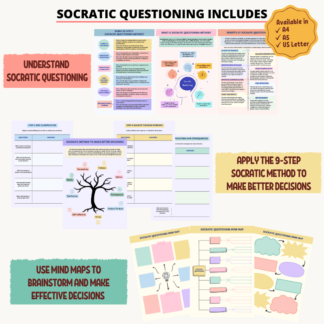
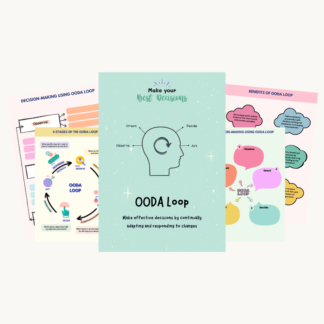
Reviews
There are no reviews yet.